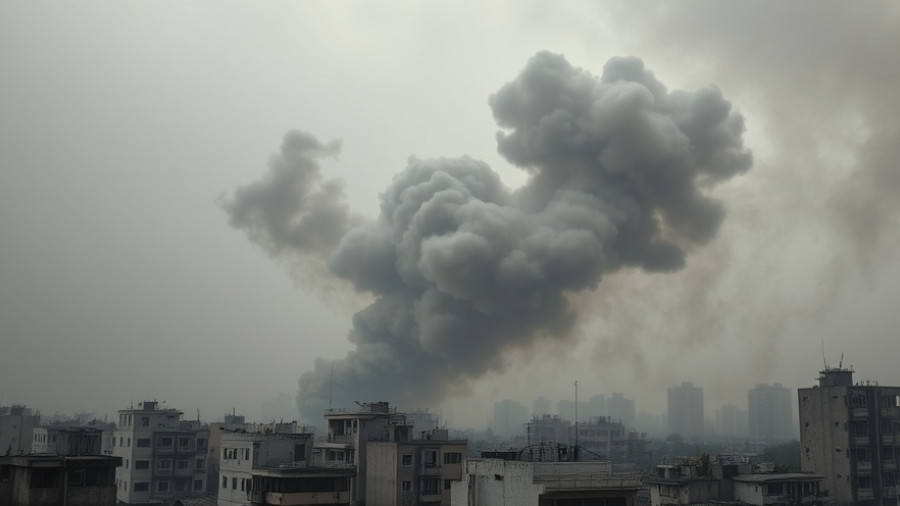
Understanding the Fragile Ceasefire Between Israel and Hamas
In the ever-turbulent landscape of the Israel-Hamas conflict, a fragile ceasefire has been intermittently holding since October 10. However, the recent escalation in hostilities threatens to unravel months of precarious peace. Recently, both parties have accused each other of violations, leading to increased tensions significantly, showcasing the complexity of the situation in Gaza.
What Happened Over the Weekend?
Over the past weekend, a series of airstrikes erupted across Gaza, resulting in widespread panic and destruction. Following alleged attacks on Israeli soldiers stationed in Rafah, Israel claimed to have responded to these provocations with airstrikes that left numerous casualties, including both militants and civilians.
Hamas has vehemently claimed that it did not initiate these confrontations, raising doubts on who is responsible for disrupting the ceasefire and how accountability can be established without independent verification on the ground.
The Accusations from Both Sides
The war of words has intensified, with Israel stating it would maintain the ceasefire while enforcing strict measures to counter alleged threats from Hamas. In the fray, both entities have exchanged accusations; while Israel notes Hamas's series of attacks as violations, Hamas retaliates with claims of ongoing Israeli aggression and civilian casualties.
The severity of this situation is underscored by the reports of at least 97 Palestinians who have died since the ceasefire took effect, highlighting the human toll of these recurring skirmishes.
The International Context of the Ceasefire
At the heart of the negotiation for this ceasefire is a complex international landscape. U.S. involvement is critical, as President Trump and other leaders have been placing pressure on both sides to uphold their commitments. Trump's envoy, Steve Witkoff, along with Jared Kushner, visited Israel recently to mediate the situation and ensure that the ceasefire remains in place. However, questions arise as to how feasible it is for foreign leaders to manage an ongoing conflict characterized by deep-rooted historical grievances.
Potential Outcomes and Challenges Ahead
As it stands, the ceasefire's future appears uncertain, with the threat of conflict resuming looming large. The need for aid entering Gaza also remains urgent as humanitarian conditions are dire, underscoring the importance of comprehensive international efforts to stabilize the region. Moving forward, strategic dialogues about demilitarization, humanitarian access, and mutual recognition could be pivotal in shifting towards a longer-term solution.
Technology as a Mediating Influence
Aligned with the rapid advancement of technology during crises like these, the utilization of advanced communication tools, including AI-driven insights, presents new avenues to understand real-time complications. Just as AI systems like Perplexity AI can analyze large datasets to extract meaningful patterns or facilitate decision-making in other sectors, such approaches could find application in understanding and possibly resolving disputes in conflict zones.
Final Thoughts: Engaging AI for Peaceful Solutions
In this era of digital transformation, AI offers hope in bridging gaps and promoting dialogues that could lead to a more profound understanding among conflicting parties. As the situation in Gaza remains critical, leveraging innovative technology to enhance communication, humanitarian efforts, and transparent reporting can foster conditions for peace. Stakeholders in all domains—international leaders, humanitarian organizations, and tech enthusiasts alike—must collaborate to explore AI's vast potential in international relations.
For more insights regarding how technology can facilitate peace processes and how you can contribute to dialogues in your community, don't hesitate to explore resources that illuminate pathways to understanding complex issues like the Israel-Hamas conflict.
 Add Row
Add Row  Add
Add 




Write A Comment